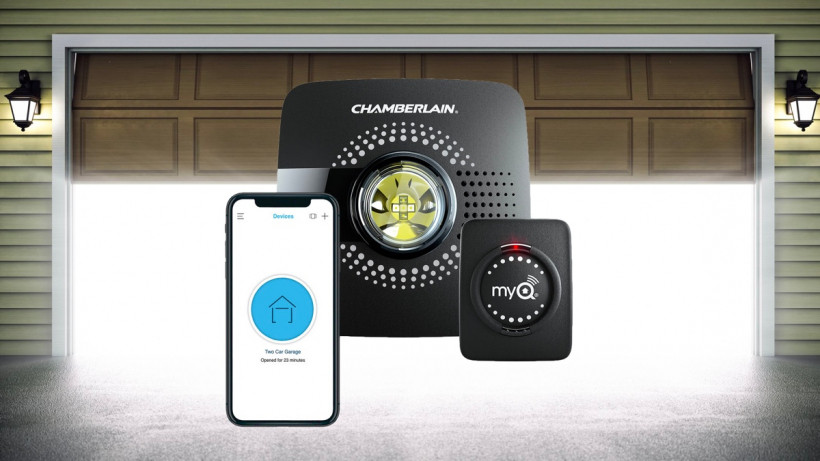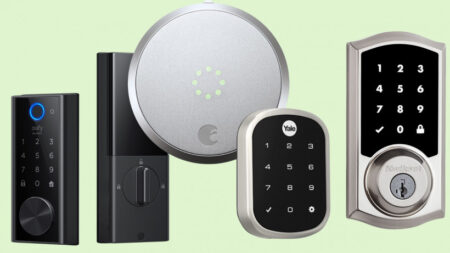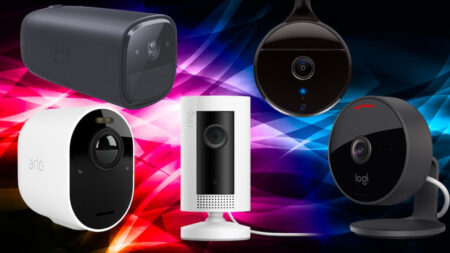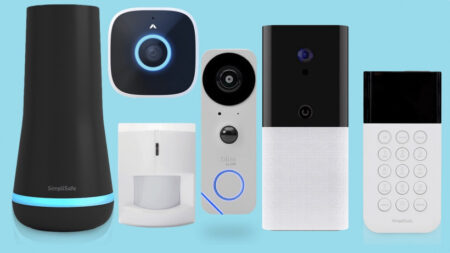This simple smart home gadget is like a smart door lock for your garage
Leaving the garage door open is a major factor in marital disharmony, up there along with not emptying the dishwasher and forgetting to fill the gas tank.
We’re here to help with our roundup of the best smart garage door controllers to ensure no-one ever forgets to shut the garage door, putting your precious man cave in peril.
A smart garage door controller is an add-on device you attach to your existing garage door opener so you can open and close the door from anywhere. It doesn’t change the way your garage door works, or stop you from using any existing physical buttons or remote controls.
But it does mean you can do really handy things like have your door automatically shut at night or open as you drive up the driveway using geofencing tech. It also works like a smart lock, giving you another way to let people in if you’re not there.
And, with companies like Amazon offering “in garage” delivery, it can be very helpful if you get lots of packages.
The obvious reason to get one though is if someone in your household constantly forgets to close the door. A smart garage door controller will send you an alert when this irritating event occurs so you can whip out your phone and close it. Some models will actually automatically close it for you – an excellent feature for peace of mind.
More smart home: Best smart home devices
Of course you can also hook them up with a voice assistant so you can say “Hey Siri, open the garage door,” as you’re walking to the garage. They’ll also integrate with smart home systems – HomeKit, SmartThings, Alexa, Google Assistant etc. – so you can set up smart home automations.
There’s a fair amount of different features on offer here, including some important things to know about compatibility and installation. For more on all of this head to our What You Need To Know Before Buying section.
Otherwise dive right into our top picks for the best garage door controller.
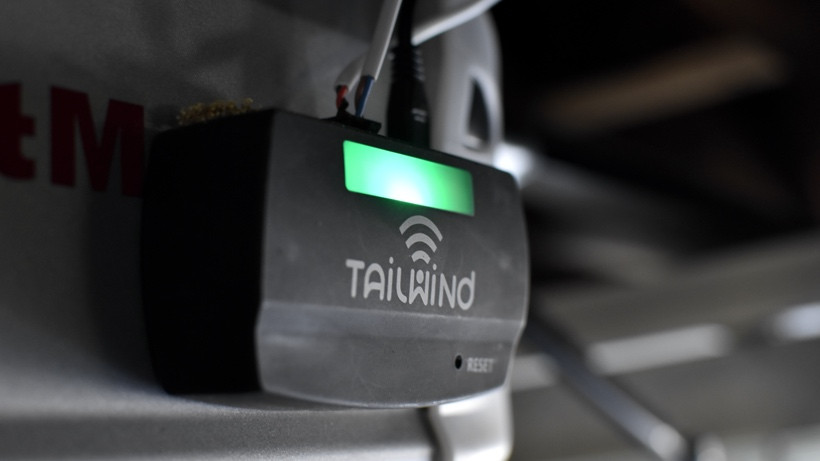
Best smart garage door controller: Tailwind iQ3
Buy Now: Amazon , gotailwind.com | $79.99
The Tailwind is packed with features, works with a tonne of systems, and has a really great app. But what really makes it stand out is that it has nailed the automatic opening feature, and it does it totally securely.
This is that magical smart home experience when something just happens the way it’s supposed to. In this case, Tailwind will open the door for you automatically when you arrive home, and then close it for you as you leave. No tapping, talking or waiting required.
Tailwind has devised a neat system that uses your phone’s GPS and your car’s Bluetooth connection to accurately geolocate you and make your door dance like magic.
It works natively with Android phones, but iPhone users need to get one of Tailwind’s sensors for the feature to work. These are waterproof though, and are handy for putting on things like bikes, scooters or even in a kid’s backpack.
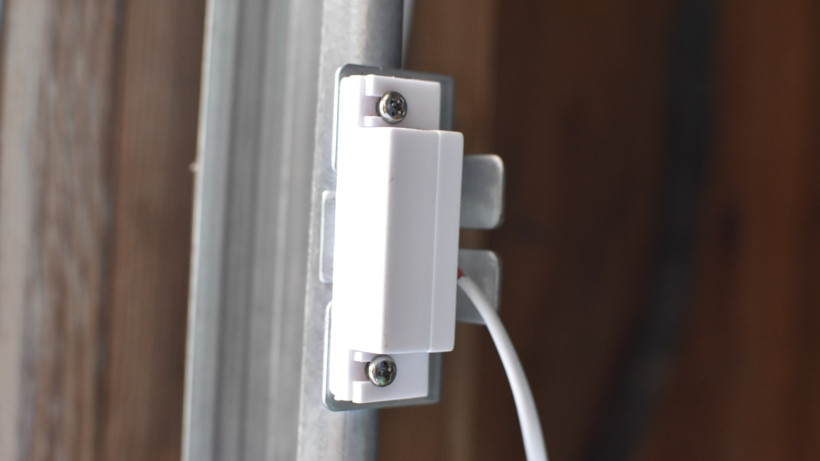
You can also assign “vehicles” to people in your family so the app can tell you who opened your door and when – a lot like smart door locks so.
Other features Tailwind offers includes schedules, customizable notifications about your door’s status, the option to auto close after the door’s been open for a pre-set period of time, and a Night Mode that shuts the door if it’s still open when the sun goes down or after 5 minutes if someone opens it during the night.
There’s also a history log so you can see what the door’s been doing and you can share access with family members and guests, plus schedule times they can use the door. Also, one Tailwind unit can control up to 3 doors, you just need a sensor for each one.
There’s no integration with smart cameras, which is something you might want to make sure your door is shut when using one of these gadgets. But Tailwind works with a wired door sensor, so false sensor readings (the app telling you the door is shut when it’s actually open) won’t happen. A wired sensor does mean a more involved – although not hard – installation.
Tailwind works with Amazon’s Alexa, Google Home, IFTTT, SmartThings, and Siri Shortcuts, with HomeKit coming soon. It’s compatible with all garage doors with safety sensors, although you will need a free adaptor for newer Chamberlain and Liftmaster brand openers. Consult the compatibility checker here.
What we love
- Super reliable
- Automatic opening and closing
- Tells you who opened your door
What we don’t love
- Tricky installation
- iPhone users need to buy an extra sensor
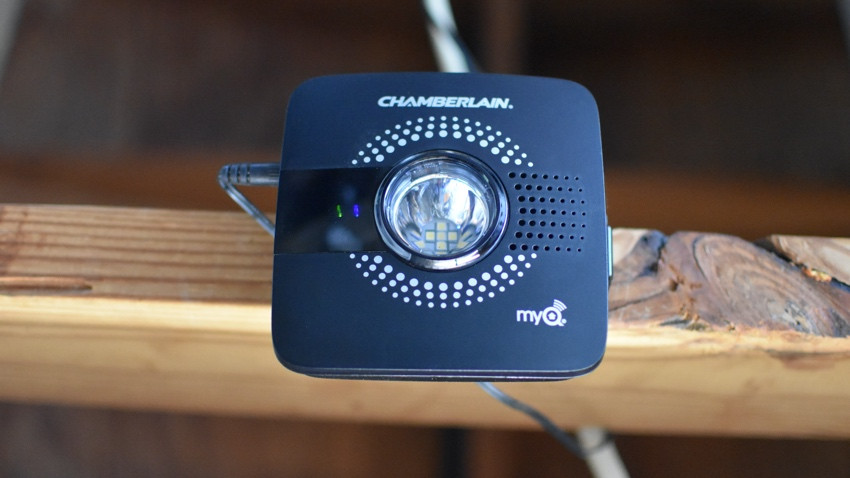
Best smart garage door controller on a budget: Chamberlain MyQ-G0301
Buy Now: Amazon, chamberlain.com | $39.99
The original is still one of the best – despite the glaring omission of no Alexa voice control. The MyQ smart garage door controller has been around for ages and works really well, as long as you have a compatible door (you can check here).
The best feature here is a super easy install – you don’t need to wire this into the back of your garage door opener, all you need to do is plug the hub into power and mount it to the ceiling near your opener. Then, stick the sensor on your door (up to two doors) and pair it all up using Bluetooth and WiFi. It’s really easy.
Once installed you can open and close the door remotely using the app, set up schedules and get customizable notifications about the status of your garage door. The app also has a log of your door’s activity and you can invite three people to control your garage.
You can’t have it close automatically and MyQ is quite picky about what you can do with its door – especially when connected to smart home systems. With all integrations you can only close it not open it – for “safety reasons” says the company. The only one that will let you do this is HomeKit integration (but you need to buy a $70 bridge for that).
There’s also no native geofencing, so this door won’t open and close automatically based on your location. Although, if you hook it up to HomeKit you can get this feature – but HomeKit requires you to authorize any routine that “unlocks a door” so you still need to tap your phone or watch.
MyQ does work with Amazon Key – the company’s new in-garage delivery service, but this is only available in a few cities. There is no Alexa integration, but you can use connect with Google Home and IFTTT (there are no longer any fees to do this). MyQ also integrates with Vivint, Xfinity Home, Honeywell, and Eve for Tesla
The new Liftmaster Smart Garage camera ($149.99) works with the MyQ, filling the hole left by the death of the Nest integration last year. It’s a neat device that can magnetically attach under your opener. You get live view, motion alerts, and two-way audio for free, or 7 to 30 days of video history for $3 or $10 a month.
The camera feed shows up in the MyQ app so you get a live view of your door, and it also works with Amazon Key.
What we love
- Cheap
- Easy install
- Works with Amazon Key delivery
What we don’t love
- No Alexa
- Some restrictions on opening
- No auto close option
- HomeKit costs $70 more
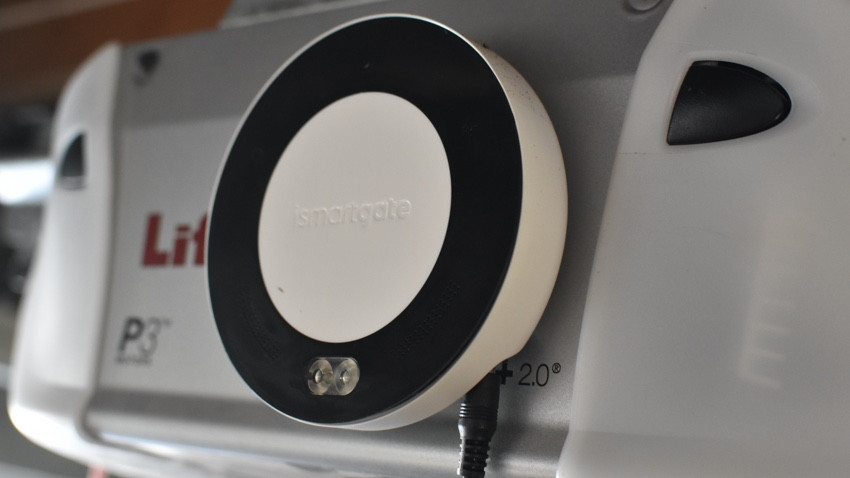
Buy now: Amazon, ismartgate.com | £154
The iSmartGate Pro is the workhorse of garage door controllers. It does everything, even working with gates and HomeKit right out of the box. But our favorite feature is its native IP camera integration.
It also has Alexa, Google, SmartThings and IFTTT support, plus works with wired or wireless sensors, has a web interface, and can be hooked up to ethernet if you have spotty WiFi in your garage.
The Pro can control three doors with one unit, doesn’t rely on the cloud (working locally over your home network), and works with a wide range of door openers (except newer Chamberlain and Liftmaster openers).
The camera feature gets you a live view as soon as you open the app so you can see in real time the status of your door. You can either purchase one of iSmartGate’s cameras or integrate it with a ton of cheap IP cameras. The video storage costs $30 for 3 years.
The app – which is a bit tricky to navigate beyond the excellent home screen – also lets you share access with up to 100 other people, at different levels
There’s no native geofencing, but you set this up using HomeKit or IFTTT. Because it doesn’t rely on a cloud component, setup can be a bit of a faff, but that’s the price you pay for not sharing your personal data over the inter webs.
iSmartGate Pro is the most expensive model we tested, the iSmartGate Lite is their cheaper model ($98) and has nearly identical features, except it only works with one door and you can’t use wired sensors.
What we love
- Works with gates
- HomeKit compatible natively
- Can play music when you open your door
- Available in the UK
What we don’t love
- App is confusing
- Camera setup can be tricky
- Doesn’t work with all doors
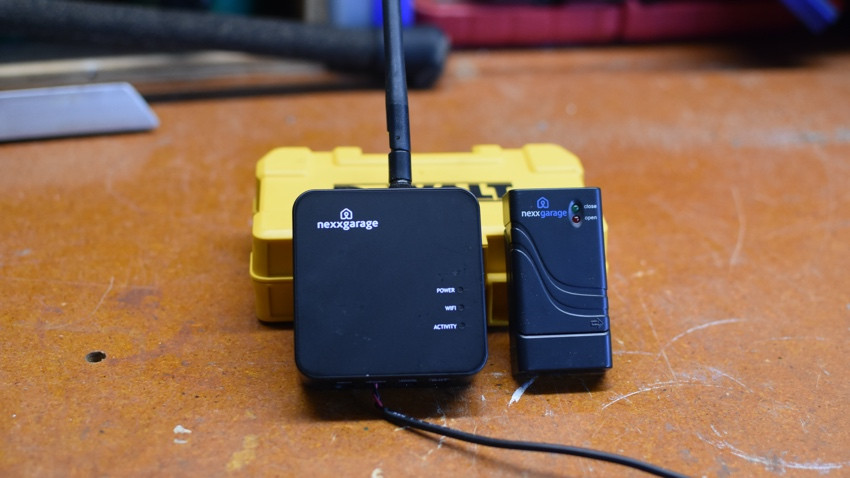
Best smart garage door controller for Alexa/Google: Nexx NXG-200
Buy Now: Amazon, getnexx.com | $79.99
While all our picks work with one or other voice assistant, the Nexx controller is a good option if you’re looking for Google Assistant or Alexa control. We found that it worked really well with both platforms, opening or closing your door with no restrictions (other than a PIN code for opening). It also works with Siri Shortcuts.
Nexx’s other great feature is built-in geofencing (so no need for a vehicle sensor or smart home integration). It worked pretty well in our testing, but was less reliable than Tailwind’s geofencing option, taking longer to shut the door so sometimes we were out of sight before it closed (it is a Beta feature).
Install is easy, you just wire it into the back of your controller and stick the sensor on the door (there is the option of a wired sensor if you want more reliability). It works with most garage doors and has an adaptor for those it’s not directly compatible with.
The app will notify you when the door opens or closes and has the option of sending you a voice notification, which is cool. It will also keep reminding you if you leave your door open. A history log shows who accessed the door and when, and you can also use a schedule to open or close the door on certain days or dates and times.
A share feature lets you give access to others with the choice to limit that to certain times and or days. There’s no auto-close setting, but you can use timers to auto open or close after a set period.
Nexx’s sensors can also detect carbon monoxide and temperature and notify you if either go above below a certain range, a very handy safety feature. It will only control one door however, you’d need to buy a whole new unit if you had a two-car garage.
What we love
- Reminds you the door is still open
- Voice notifications
- Built-in geofencing
- Monitors carbon monoxide
What we don’t love
- Only controls one door
- Geofencing spotty
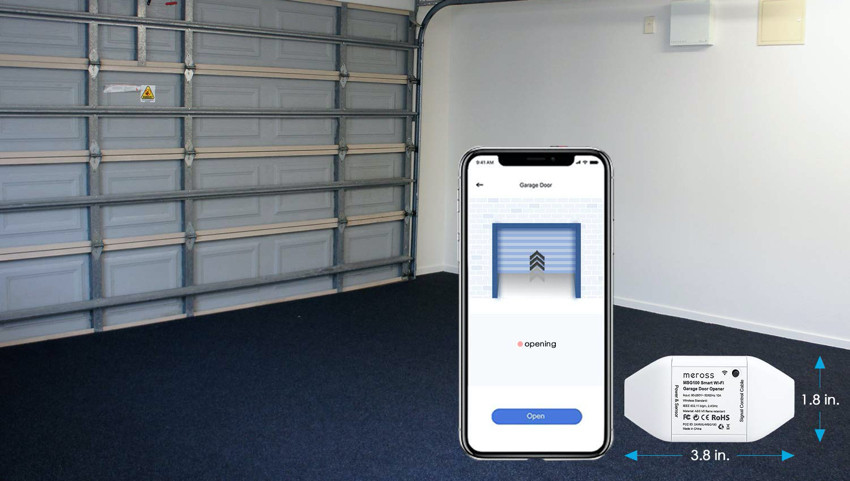
A budget HomeKit option: Meross MSG100
Buy Now: Amazon | £42.49
The Meross Smart Garage Door Opener Remote is the newest HomeKit compatible controller and also the cheapest. It looks like a really great option if you want to add your garage door into your Apple HomeKit system without spending a fortune, plus it works in the UK, too.
While you can set it up and control it through HomeKit, the Meross app also offers auto-close features, scheduling, remote control, and notifications about your door’s status. And it works with Alexa, Google and SmartThings too. A history log in the app lets you see when your door was opened and a nighttime option will alert you if you leave your door open when it’s dark out.
The Meross will work with all garage door openers (there’s an adaptor for Chamberlain and Liftmaster doors). We have not tested this unit yet, but it’s on its way and we’ll update this with our thoughts as soon as we can.
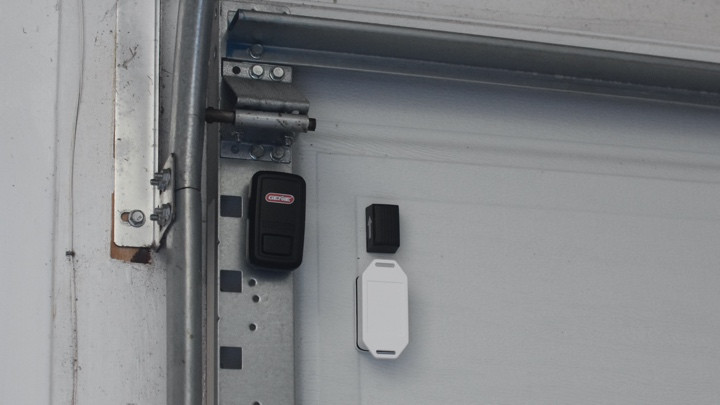
Smart garage door controllers: What to know before buying
Before buying a smart garage door controller, there are a few things you should consider. For starters, not all smart garage door controllers will work with all garage door openers. Many manufacturers have a list of compatible doors on their website, so make sure you check that before you buy.
In particular, newer ones made by Chamberlain or its sister companies – Liftmaster and Craftsman – will only work with the MyQ. (Although Tailwind and Nexx both have free adaptors to “force” compatibility). However, most newer Chamberlain openers have their MyQ technology built-in so you won’t need to buy anything.
Another crucial component is the Wi-Fi. Garage door openers use 2.4 GHz signaling, but you’ll need to make sure you have a strong connection that reaches your garage. If not, look at getting yourself a Wi-Fi range extender, or see if you can run an ethernet cable out there – iSmartGate works with ethernet.
Installation is pretty simple. All smart garage door controllers consist of a hub that connects to your opener’s motor (either wirelessly or wired) and a door sensor that goes on your door, this is what tells the hub if the door is opened or closed. The sensor can be wired or wireless and battery powered.
The hub generally needs to be mounted to or near your opener’s motor using some strong double sided tape (normally supplied). Most need to be wired into the back of your opener – but this is really simple, you won’t need an electrician, you’ll just need a ladder.
Smart home integration isn’t essential with a smart garage door controller – if all you want to do is open and close it remotely you just need the app on your smartphone. But if you want to do more with it and integrate with other smart devices, like lights, cameras, and security systems it’s worth getting one that works with your smart home ecosystem.
Geofencing is a real benefit, completely removing the need to use your voice, phone or any remote controls – your door just opens and closes automatically. However, there’s obviously a security concern here if something goes amiss, so think carefully before enabling this feature.
Finally, we highly recommend going with a wired door sensor if you can. While wireless sensors are much easier to install they are prone to false alerts. Like the time one fell off our door when we were out of town. We got an alert that our door had opened so we tried to shut it remotely, but actually ended up opening it. This is also a good example of why you want to have a camera for visual verification – especially if you go with a wireless sensor.


